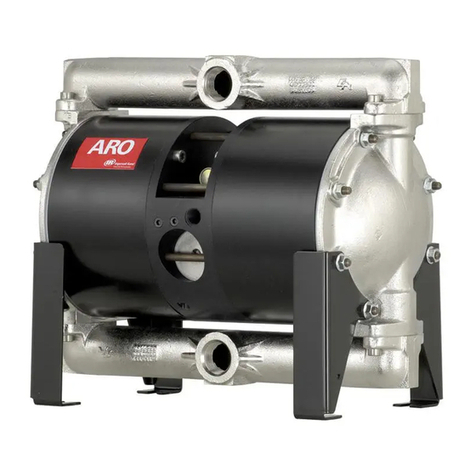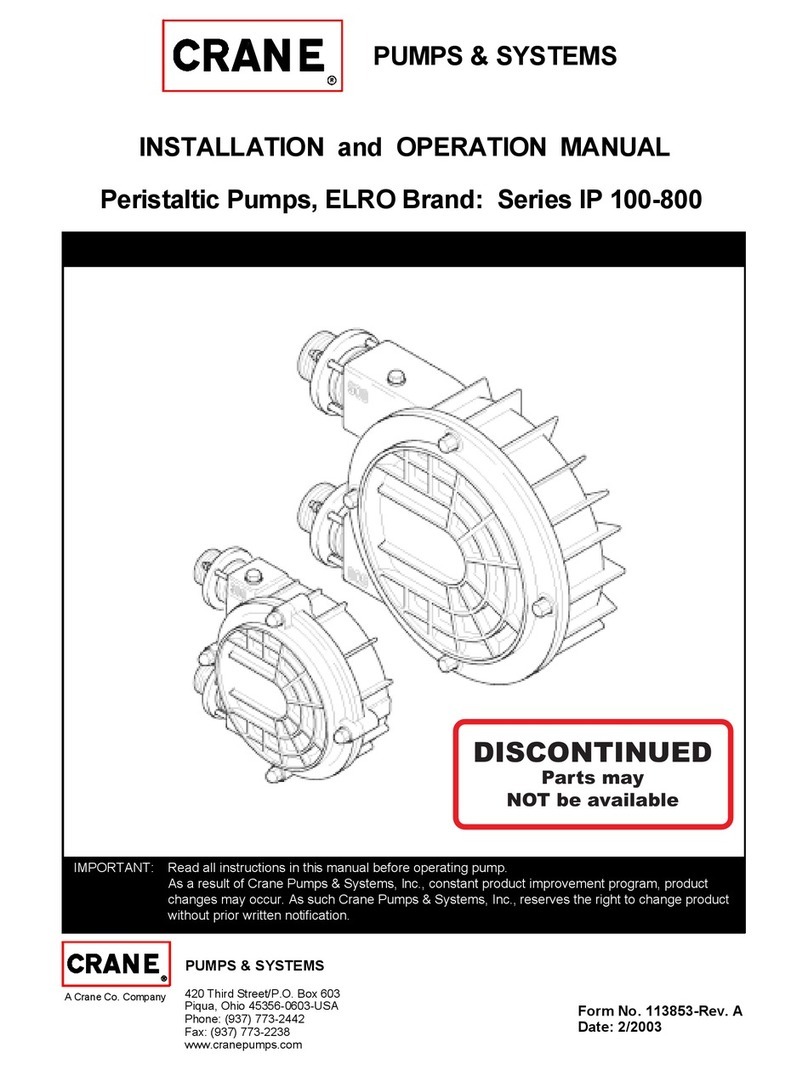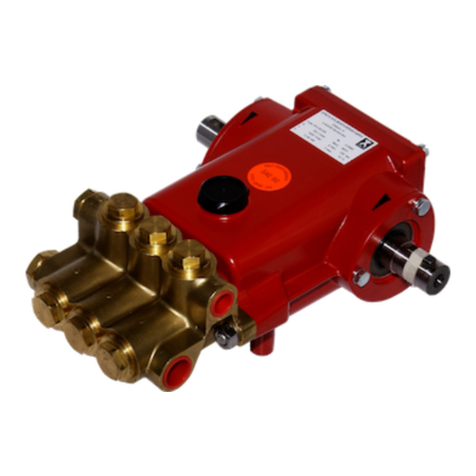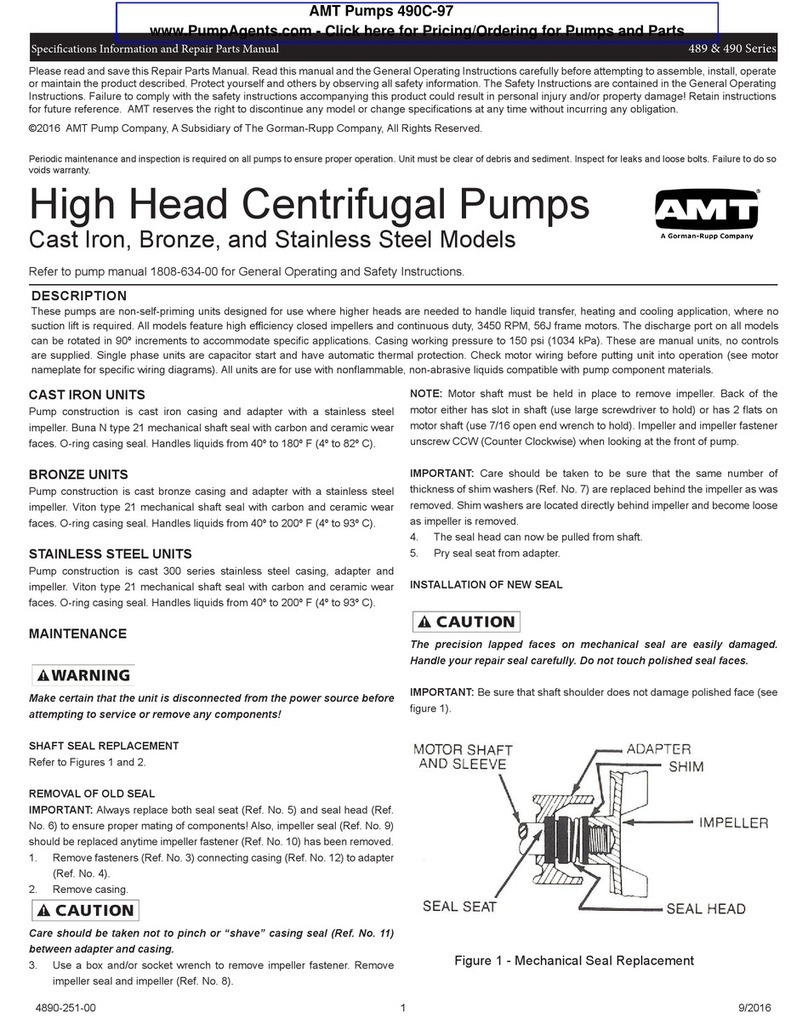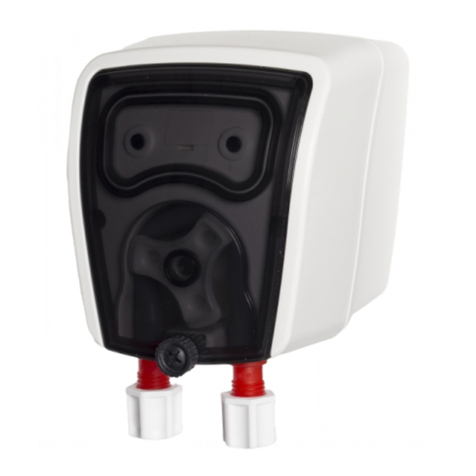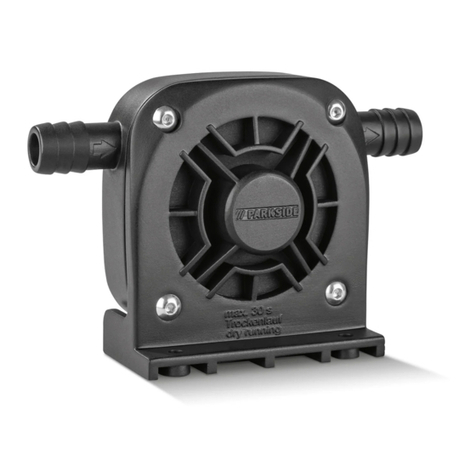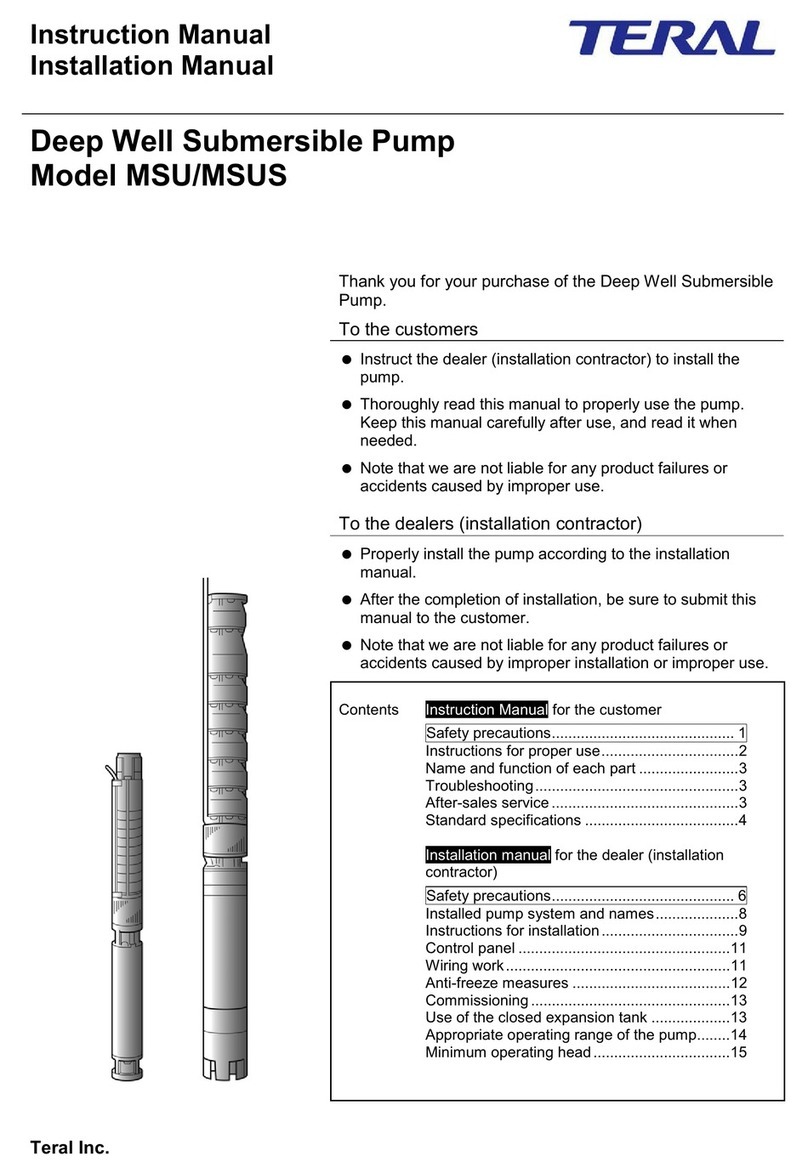Watson McDaniel PMPNT Series Instruction manual

2
Watson McDaniel Company PMPNT Manual 2605100 Rev A
Safety Considerations
Follow installation guidelines to ensure the product functions properly and as intended.
Improper installation and use may result in such hazards as damage to the product or malfunctions that
may lead to injuries or damage. Failure of the product to function may result in problems occurring in
the system, such as equipment flooding with condensate or improper drainage.
See page 9 & 10 for System Troubleshooting.
When disassembling or removing the product, wait until the internal pressure is relieved
and the product has cooled to room temperature.
Disassembling or removing the product when it is hot or under pressure may lead to injuries or damage.
Do not excessively over tighten or torque when connecting piping to the product.
Over-tightening may cause cracks and damage to the product which may lead to fluid discharge, which
may cause injuries.
Each Watson McDaniel Company Product is warranted against defects in material and workmanship for one year from date of shipment. This warranty extends to
the first retail purchaser only. All defective material must be returned to the person from whom you purchased the Product, transportation prepaid, free of any
liens or encumbrances, and if found to be defective will be repaired free of charge or replaced, at the warrantor’s or seller’s option. If the material is replaced, any
replacement will be invoiced in the usual manner and after inspection of alleged defective material an adjustment will be made for depreciation caused by
purchaser’s use. In no event will Watson McDaniel Company be liable to do more than refund the original contract price. Incidental and consequential damages
are excluded, whether under this warranty or otherwise. All implied warranties, including warranties of merchantability and fitness for a particular purpose, are
disclaimed and excluded.

3
Watson McDaniel Company PMPNT Manual 2605100 Rev A
PMPNT Specifications PMPNTS Specifications
Figure 1: PMPNT Pump Figure 2: PMPNTS Pump
Operating Specifications
Average instantaneous discharge rate
16.1 gpm
Average pump discharge per cycle
1.9 gal
Average steam consumption
3 lbs. per 1000 lbs. liquid pumped
Average Air consumption
100 SCF per 1000 lbs. liquid pumped
PMPNT/S Pressure-Temperature Ratings
PMO Max. Operating Pressure
125 psig
TMO Max Operating Temperature
353°F
PMA Max Allowable Pressure
150 psig
TMA Max Allowable Temperature
450°F
Weight
1"
85 lb
1 ½"
95 lb
1 ½" SS
98 lb
Figure 3: PMPNT Cutaway View
Note: Pump overall length dimensions shown with 1½” check valves.
For 1” check valve overall length, subtract 2.86”.
Pump Serial Number and Date Code
can be located on the tag mounted to
the top of the pump cover.

4
Watson McDaniel Company PMPNT Manual 2605100 Rev A
Principle of Operation
The Pressure Motive Pump allows discharge of
high-temperature condensate for return to the
boiler. They can also be used to discharge water
and other liquids for transfer to other locations.
The PMPNT is for applications requiring compact
design due to spatial constraints and is used when
liquids must be moved to higher elevation, higher
pressure, or extended distances. The PMPNT is
intended to work in an open loop (vented) system.
A Pressure Motive Pump consists of a pump tank,
float with internal operating mechanism, and a set
of inlet and outlet check valves to control direction
of flow. The positions of the vent and motive
valves control the filling and discharge of the
pump. The vent valve must be open during the
filling cycle to allow air or steam in the pump to be
displaced as water enters the pump. Once the
pump becomes filled, pressurized gas enters the
tank through the motive line to push condensate
out of the pump and into the downstream return
line. Since water flows into the pump by gravity,
the pump tank pressure must be neutralized for
the pump tank to fill.
1. When the pump is in the normal start up
position, the float mechanism will be at its
lowest point with the vent valve open and the
motive pressure valve closed.
2. As condensate fills the pump, the float
mechanism begins to rise.
3. The float mechanism will continue to rise until
it reaches the upper trip point. When the spring
loaded mechanism reaches the trip point, it
snaps over the center and the motive pressure
valve opens and the vent valve closes.
4. When the motive valve opens, the pump
becomes pressurized under the motive
pressure, opening the outlet check valves and
discharging condensate out of the tank. A
check valve placed at the condensate inlet will
stop the condensate from being pumped back
into the receiver. As the condensate flows out
of the pump under the motive pressure, the
float begins to drop.
5. When the float reaches the low trip point, the
mechanism snaps over the center and the
motive pressure valve closes and the vent valve
opens. The pressure in the pump is released
and the condensate is able to once again flow
from the receiver down into the pump.

5
Watson McDaniel Company PMPNT Manual 2605100 Rev A
Installation –Open Loop (Vented) System
1. The pump must be installed standing in the
vertical position and located below an
atmospheric (vented) receiver. It is
important that the preferred operating
filling head be established from the top of
the pump body to the underside of the
receiver. A minimum of 6” filling head is
recommended. Note: Less fill head is
possible, but capacity will be reduced from
published values.
2. Vented Receiver: A vented receiver
should be installed before and above the
pressure motive pump. If you will be using
and existing tank or fabricated one, be
sure to verify that the vessel is properly
sized and vented for the application.
Please consult our sizing guide on Page 10
of this instruction.
3. Connect the inlet and outlet check valves
to the pump. Caution: Make sure that the
flow arrows on the check valves are
oriented in the proper direction. For
optimum performance, horizontal pipe runs
immediately before and after the check
valves should be kept as short as possible.
Pipe up the pump inlet check valve to the
receiver and outlet check to the discharge
line. It is recommended that full port
isolation valves be used for the pump,
matching the line size.
4. Connect the operating steam supply
pressure to the motive inlet connection
(1/2" FNPT) at the top of the pump head.
Motive pressure line should always be
equipped with an isolation valve, strainer
and a steam trap. The motive steam drip
trap condensate discharge may be piped to
the top of the receiver or pump
discharging line. A PRV may also be
considered in the motive piping to adjust
the pressure to optimum level.
5. Pump Vent/Exhaust Line: Install a pipe
line from the pump vent connection (1/2"
FNPT) to the top of the receiver. This
piping is extremely important to ensure
proper operation of the pump and system.
Figure 4: Open Loop Pump System

6
Watson McDaniel Company PMPNT Manual 2605100 Rev A
Start up
1. Gradually open steam supply to provide
pressure at the pump motive inlet. Make
sure the motive trap is operational.
2. Completely open the full port isolation valves
in the pump condensate inlet and outlet lines
as well as any isolation valves in the pump
vent/exhaust line.
3. Open the isolation valve(s) ahead of the
pump receiver allowing condensate to enter
the vessel and begin to fill the pump body
below it. Pump will discharge when full.
4. Carefully observe the PMP unit. The pump(s)
should cycle periodically with an audible
sound at the end of each pumping cycle. If
any irregularities are observed, recheck
installation and start-up instructions for proper
procedure, or call the applications engineering
department for assistance.
5. If overflow piping has been provided (see
below), check that a water seal has been
established to prevent any steam from being
vented in normal operation. Prime piping if
necessary.
Figure 5: Open Loop Pump System with Overflow

7
Watson McDaniel Company PMPNT Manual 2605100 Rev A
Maintenance
Close all pump isolation valves. Make certain no
pressure is trapped in the system. Allow unit and
piping to cool to room temperature.
1. Remove the motive pressure and vent piping
connections. Remove bolts from top cover
and lift complete mechanism out of pump
body.
2. Inspect mechanism for wear, dirt, and scale.
Make sure the mechanism moves as intended.
Remove check valves and inspect for any dirt
or debris that could be obstructing the valve.
Clean seating surfaces then reinstall or
replace if necessary.
3. Check the (2) springs and pins. If either is
defective, remove and replace with new
springs and pins. Note: Disassemble and
replace one spring at a time
4. Inspect motive pressure inlet and vent
valves. Clean the valve and seats, and
replace if necessary. If pump is not cycling,
check motive pressure and adjust to 10 psi
min. above the backpressure. If the motive
pressure valve is leaking, the inlet valve may
be obstructed or damaged. With the pump
isolated, remove the cover and inspect.
Replace the inlet valve and seat assembly, if
necessary.
5. Make sure the pump mechanism is in the
proper orientation when reassembling.
Reconnect the motive and vent lines to the
pump, refer to the installation instructions.
After the pump is reinstalled, follow the
start-up procedures to bring the pump into
operation.

8
Watson McDaniel Company PMPNT Manual 2605100 Rev A
Maintenance cont.
Model
Kit Order #
Description
PMPNT & PMPNTS
W-KIT-902-04
Cover Gasket
W-KIT-902-05
Inlet & Vent Valve Assembly
W-KIT-902-06
Float & Cover Gasket
W-KIT-902-08
Spring Assembly
W-KIT-914-03
Complete Pump Mechanism Assembly & Gasket PMPNT
W-KIT-914-03-SS
Complete Pump Mechanism Assembly & Gasket PMPNTS
VENT VALVE
OUTLET
MOTIVE VALVE
INLET
OUTLET CHECK
VALVE
CONDENSATE
INLET CHECK
VALVE
Figure 6: PMPNT(S) Cutaway View
GAUGE GLASS (OPTIONAL)
902-08
SPRING ASSEMBLY
902-04
COVER GASKET
902-05
INLET & VENT
VALVE ASSEMBLY
902-06
FLOAT
Ordering Spare Parts
Figure 7: PMPNT(S) Cutaway View

9
Watson McDaniel Company PMPNT Manual 2605100 Rev A
System Troubleshooting
PROBLEM
POSSIBLE
CAUSE CORRECTION
1. Pump fails to operate
on startup.
a) Motive pressure line closed
a) Open valves to supply motive pressure to
pump
b) Motive pressure insufficient to
overcome backpressure
b) Check motive pressure and backpressure.
Adjust motive pressure to 10 psi (min.)
higher than the backpressure
c) Liquid inlet line closed
c) Open all valves to supply liquid to the
pump
d) Liquid discharge line closed
d) Open all valves on the discharge side of
the pump
e) Pump vapor-locked
e) Break vent connection at pump cover.
Stand clear of vent connection. If pump
begins to cycle, vapor locking has
occurred. Re-check that the exhaust tie-
back line is unobstructed and completely
self-draining to a lower pressure area
with sufficient vapor space
f) Insufficient fill head to allow pump
to trip
f) Check that fill head is large enough for
condensate to drain freely by gravity into
the pump properly. Raise condensate
source or lower pump to achieve required
filling head
2. Liquid backup and
equipment flooded, but
pump appears to cycle
normally
a) Motive pressure is too low to
achieve required capacity
a) Check motive pressure setting and
maximum backpressure during operation.
Check against sizing table. Increase
motive pressure as required
b) Insufficient filling head to achieve
required capacity
b) Verify required filling head is large
enough for condensate to drain freely by
gravity into the pump properly. Raise
condensate source or lower pump to
achieve required filling head
c) Restriction in liquid inlet line
c) Check that only full ported fittings are
used. Clean the strainer. Verify that all
valves are fully open
d) Inlet check valve stuck open
d) Isolate inlet check valve and relieve
pressure. Remove cap and visually
inspect for debris. Clean seating surfaces
and reinstall or replace, if necessary
e) Pump undersized
e) Verify rated capacity in the sizing capacity
table. Increase check valve size or install
additional pump as required
3. Liquid backup and
equipment flooded, and
pump has stopped
cycling
a) Motive pressure low
a) If motive pressure is below backpressure,
increase motive pressure setting to 10 psi
(min.) above backpressure. Do not
exceed rated pressure limits of equipment
b) Discharge line closed via valve
blocked with debris
b) Compare motive pressure and
backpressure. If backpressure is higher
or equal, a closed or blocked discharge
line is possible. Check valves
downstream of pump

10
Watson McDaniel Company PMPNT Manual 2605100 Rev A
PROBLEM
POSSIBLE
CAUSE CORRECTION
3. (continued)
Liquid backup and
equipment flooded,
and pump has
stopped cycling
c) Outlet check valve stuck closed
c) After checking per step 3(b), isolate
discharge check valve and relieve line
pressure. Remove cap and visually inspect.
Clean seating surfaces and reinstall or
replace, if necessary
SAFETY NOTE TO
PREVENT INJURY:
For steps (d) through
(g), it is necessary to
disconnect the vent
line at the pump
head. It is possible
that hot condensate
may run out of the
vent connection
when broken.
d) Inlet check valve stuck closed
d) If mechanism is not heard to trip and fluid is
not running from the vent connection, it is
suspected that the fault lies in the
condensate inlet piping. Be sure that all
valves leading to the pump have been
opened. If so, this is a possible indication
that the inlet check valve is stuck closed.
Isolate the pump and check valve and
relieve line pressure. Remove the check
valve and visually inspect. Clean seating
surfaces and reinstall or replace, if
necessary. Reinstall exhaust/tie-back
connection and open line
e) Motive inlet valve leaking and/or
worn
e) Gradually open motive supply line, leaving
the condensate inlet and discharge lines
closed. Observe the vent connection for
steam or air leakage. If observed, inlet
valve is obstructed or damaged. With pump
isolated, remove cover and visually inspect.
Replace inlet valve and seat assembly
f) Mechanism failure
1. Ruptured float
2. Mechanism binding
f) Keeping motive line open, slowly open
condensate inlet line to the pump, allowing
pump to fill and observe vent connection. If
condensate runs out of vent connection, a
mechanism problem is apparent. Isolate
pump by shutting off motive supply and
condensate inlet, remove cover and visually
inspect. Examine float for defects. Stroke
mechanism and check for any binding or
increased friction. Repair or replace as
needed
g) Exhaust/tie-back causing vapor
lock
g) Recheck the vent/tie-back piping layout for
compliance with the installation instructions.
Check that the exhaust tie-back line is
unobstructed and completely self-draining
to a lower pressure area with sufficient
vapor space
4. Valve will not close
a) When a pump discharges a
significant volume of liquid into a
long horizontal return line with
rises and drops, the sudden
changes in velocity can develop a
vacuum
a) Install a vacuum breaker at high point in
return line. For pressurized return systems,
an air eliminator may be required down-
stream of the vacuum breaker
b) Pump is blowing by
b) Compare inlet and outlet pump pressure. If
the inlet pressure equals or exceeds the
backpressure, a "blow through" problem is
possible

11
Watson McDaniel Company PMPNT Manual 2605100 Rev A
PMPNT(S) Check Valve Capacities
Operating
Check Valve - Capacities
CAPACITIES - Condensate (lbs/hr) Using steam as motive pressure, (SCFM) Using air as motive pressure
Motive
Pressure
(PSIG)
Total
Back
Pressure
(PSIG)
1-1/2" x 1-1/2" Check Valve Size
0" Fill Head
6" Fill Head
12" Fill Head
18" Fill Head
Cap•Air
Cap•Stm
Cap•Air
Cap•Stm
Cap•Air
Cap•Stm
Cap•Air
Cap•Stm
5
2
1721
1375
2592
2071
3059
2445
3417
2731
10
5
1678
1369
2495
2036
2932
2393
3266
2665
10
2
1794
1528
2758
2349
3278
2792
3677
3132
25
15
1628
1354
2385
1983
2788
2318
3095
2574
25
10
1721
1489
2592
2242
3059
2647
3417
2956
25
5
1794
1601
2758
2461
3278
2925
3677
3281
50
40
1495
1196
2095
1676
2409
1927
2647
2118
50
25
1678
1455
2495
2164
2932
2543
3266
2833
50
10
1794
1638
2758
2518
3278
2992
3677
3357
75
60
1495
1203
2095
1685
2409
1938
2647
2129
75
40
1662
1443
2460
2136
2886
2506
3212
2788
75
15
1794
1653
2758
2541
3278
3020
3677
3388
100
80
1495
1207
2095
1690
2409
1944
2647
2136
100
60
1628
1397
2385
2047
2788
2392
3095
2656
100
40
1721
1542
2592
2322
3059
2741
3417
3062
100
15
181 1
1690
2795
2608
3327
3104
3736
3486
125
115
1359
1046
1803
1388
2032
1564
2204
1697
125
100
1495
1209
2095
1693
2409
1947
2647
2140
125
80
1606
1367
2336
1989
2724
2319
3019
2570
125
60
1687
1492
2515
2225
2959
2618
3298
2917
125
40
1752
1597
2662
2426
3151
2872
3526
3214
125
15
1820
1713
2817
2650
3356
3157
3770
3547
Note: For 1” x 1” Check Valve, multiply capacity by 0.58

12
Watson McDaniel Company PMPNT Manual 2605100 Rev A
Vented Receiver Sizing
Vented Receiver Sizing
Flash Steam
up to --
Receiver
Vent Line
Dia.
Dia.
Length
75 pph
4”
36”
1”
150 pph
6”
36”
2”
300 pph
8”
36”
3”
600 pph
10”
36”
4”
900 pph
12”
36”
6”
1200 pph
16”
36”
6”
Below figures are approximate for 4” X 4”
Packages
2000 pph
20”
60”
8”
3000 pph
24”
60”
8”
4000 pph
26”
60”
10”
5000 pph
28”
60”
10”
6000 pph
30”
72”
12”
7000 pph
32”
72”
12”
8000 pph
36”
72”
14”
When sizing a Pressure Motive Pump for an
atmospheric return system, the amount of flash
steam to be vented through the receiver must be
calculated. Vent sizing is critical to maintain zero
psig in the receiver tank to allow free drainage of
low pressure systems. Undersized vents will cause
gradual pressure increase in the receiver. This
impedes drainage from the condensate source, and
can cause water logging of the system.
To Size Receiver & Vent:
Usually the condensate load to be pumped comes
from multiple sources. For each source determine
the pressure and load. Then go into the "Percent
Flash" table with the condensate pressure and
move right until under the appropriate tank
pressure to read the percentage of condensate
that will flash into steam. Now take that source
load and multiply it by the decimal value of the
percentage to calculate the amount (lbs/hr) of
flash steam. Repeat this for all condensate
sources and total the flash steam. Enter the
"Vented Receiver Sizing" table with the total flash
steam load to determine the correct sizes for
receiver and vent.
Percent Flash Steam
Condensate
Pressure
(PSIG)
Flash Tank Pressure (PSIG)
0
2
5
10
15
20
30
40
60
80
100
5
1.6
0.9
0
10
2.9
2.2
1.3
0
15
3.9
3.3
2.4
1.1
0
20
4.9
4.2
3.3
2.1
1
0
30
6.5
5.8
5
3.7
2.6
1.7
0
40
7.8
7.2
6.3
5.1
4
3
1.4
0
60
10
9.4
8.5
7.3
6.2
5.3
3.7
2.3
0
80
12
11
10
9.1
8.1
7.1
5.5
4.2
1.9
0
100
13
13
12
11
9.6
8.7
7.1
5.8
3.5
1.6
0
125
15
14
14
12
11
10
8.8
7.5
5.3
3.4
1.8
150
16
16
15
14
13
12
10
9
6.8
4.9
3.3
200
19
18
17
16
15
14
13
12
9.4
7.6
6
250
21
20
19
18
17
16
15
14
12
9.8
8.2
300
23
22
21
20
19
18
17
16
13
12
10
350
24
24
23
22
21
20
18
17
15
13
12
400
26
25
24
23
22
21
20
19
17
15
14
This manual suits for next models
1
Table of contents
Popular Water Pump manuals by other brands

Flotec
Flotec FPZS50RP owner's manual
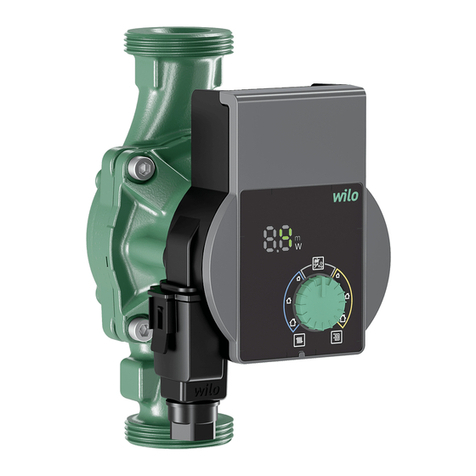
Wilo
Wilo Yonos PICO1.0 Installation and operating instructions
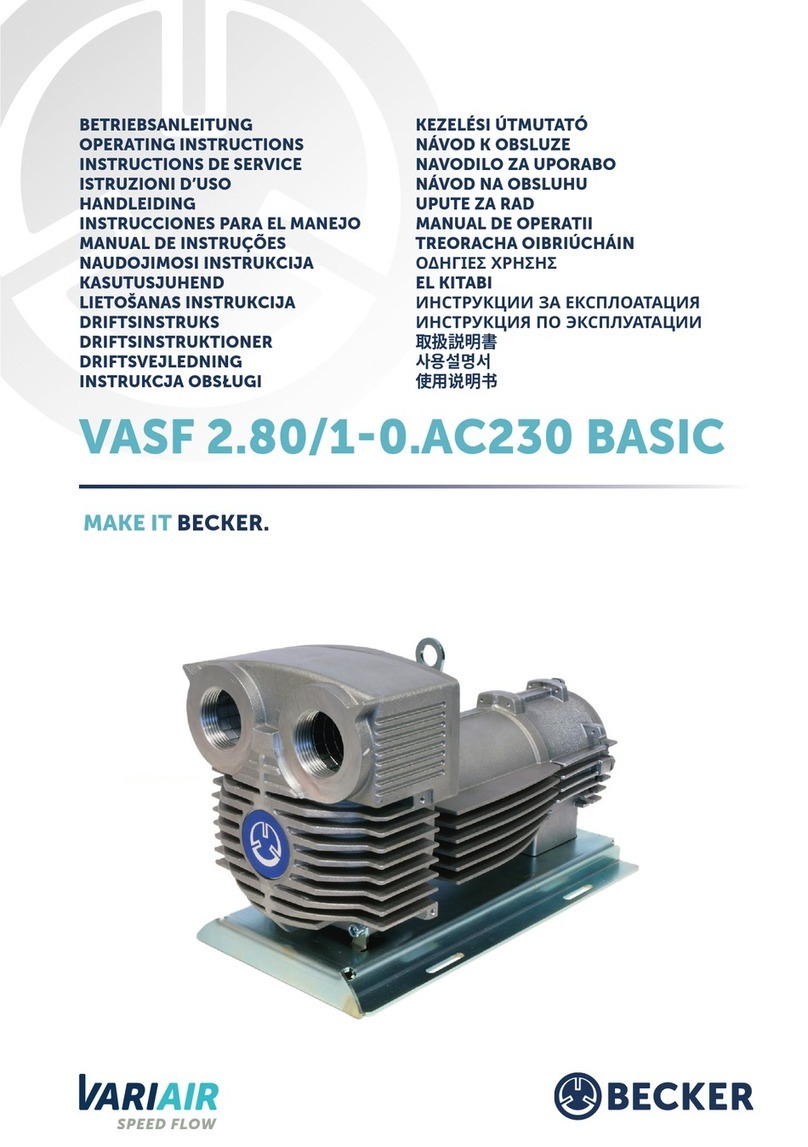
Becker
Becker BASIC VASF 2.80/1-0.AC230 operating instructions

Franklin Electric
Franklin Electric IPS Installation & operation manual
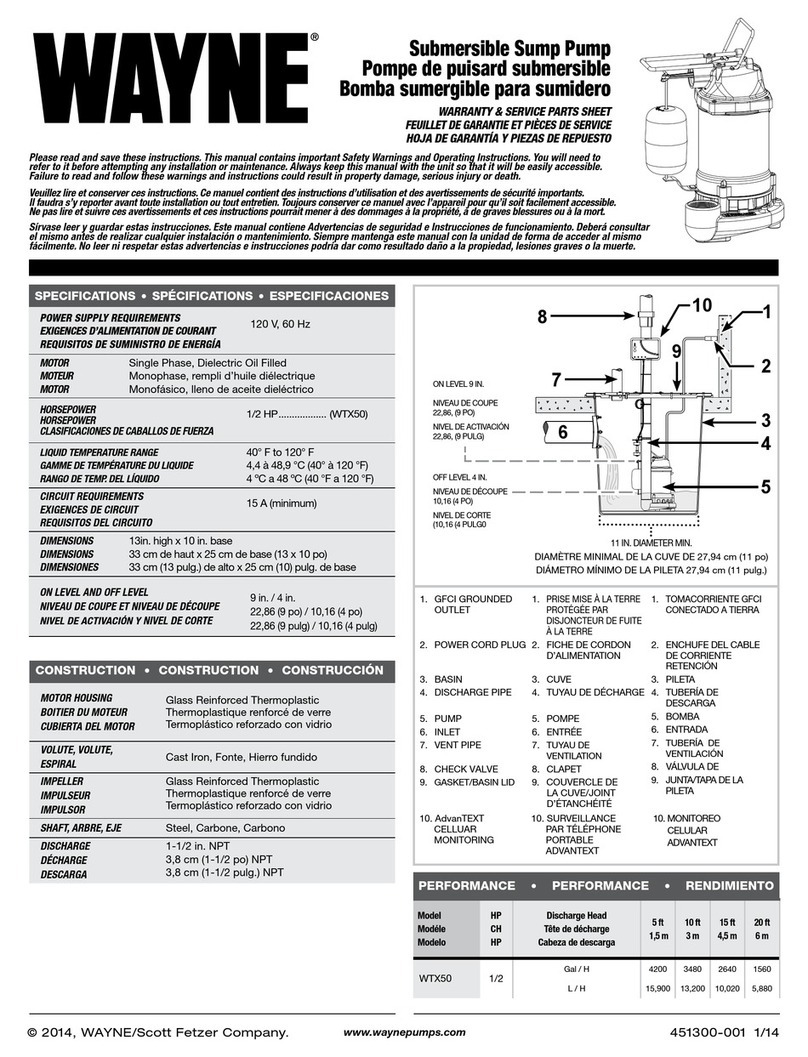
Wayne
Wayne WTX50 Warranty & service parts sheet

CET
CET PFP-20HP-HND-1D Instruction handbook




